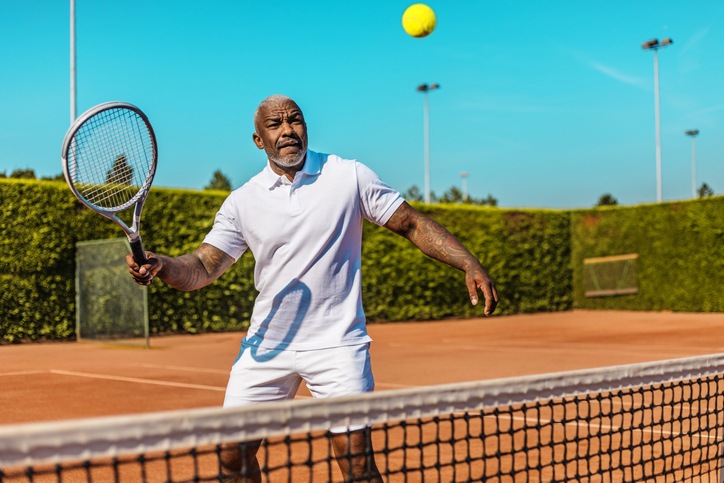Source – https://www.docwirenews.com/
A study that was presented at the Radiological Society of North America annual meeting evaluated the effects of different sports on degeneration of the knee joint in overweight patients with osteoarthritis (OA) and found that racket sports—such as tennis and racquetball—sped up the degeneration process.
“In our study, progression of overall knee joint degeneration was consistently higher in overweight and/or obese patients engaging in racket sports,” said lead study author Silvia Schirò, MD, of the University of California San Francisco and the University of Parma in Parma, Italy, when discussing the findings. “We also found that workouts using an elliptical trainer were associated with reduced progression of overall knee joint and cartilage defects. Moreover, our findings showed that when comparing different low impact activities with each other, such as bicycling, elliptical trainer and swimming, the elliptical trainer was associated with the lowest increase in WORMS (Whole-Organ Magnetic Resonance Imaging Score) sub-scores over 48 months.”
Dr. Schirò and her colleagues assessed 415 participants with a mean age of 59 ± 8.6 years, all of whom had a body mass index (BMI) >25 kg/m2 and knee radiographic Kellgren-Lawrence score <3. The average BMI was 30 kg/m2 ± 3.5, and 44% of participants were female. Patients were recruited from the Osteoarthritis Initiative cohort. Patients reported whether they regularly took part in ball sports, bicycling, jogging/running, elliptical trainer, racquet sports, and swimming. The modified WORMS was used to assess structural knee abnormalities.
Over a two-year period, participants who regularly took part in racquet sports had much greater increases in WORMS compared to those who regularly used the elliptical trainer (average difference in changes in WORMS, 4.98; 95% confidence interval [CI], 1.86–8.10; P<0.001) and who reported regular jogging/running (average difference in changes in WORMS. 2.88; 95% CI, 0.42–5.33; P=0.009).
“A large lateral force imparted at the foot during side-to-side movements may be driving large knee adduction moments, a key feature in medial compartment disease, which imparts high compressive loads on the medial tibia and femoral condyle,” Dr. Schirò said. “In support of this premise, the racket sports group showed elevated cartilage degeneration in the medial tibia.”
While the data suggest that some people may benefit from switching to other sports—such as swimming—there are safe ways to play racquetball sports, and degeneration may not be the same in everyone, according to Dr. Schirò.
“It is possible that some individuals with sufficient strength and motor control may be able to safely play these sports,” she noted. “Our data suggests that as a group, though, overweight and obese individuals who play racket sports are at higher risk for disease progression.”
